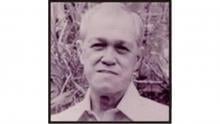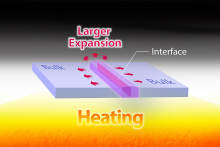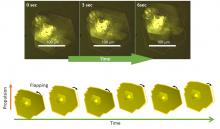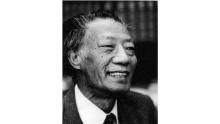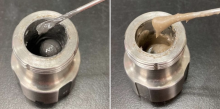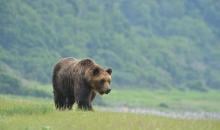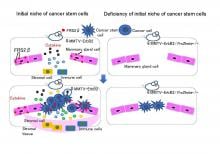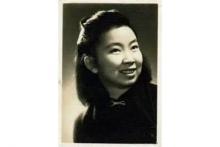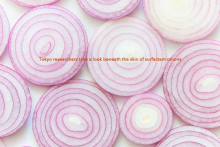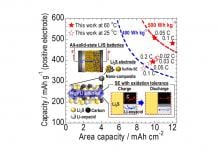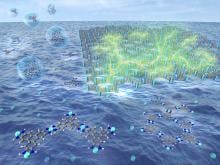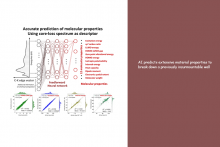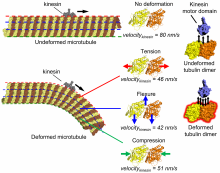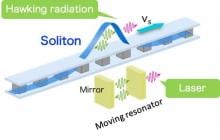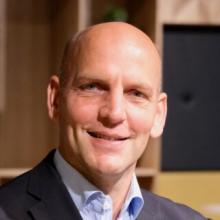Science
News
03 Dec 2021
Examination of Japanese cases of gynecological cancer offers a better understanding of the profile of a rare ovarian tumor and could change treatment guidelines.
02 Dec 2021
Researchers from the The University of Tokyo Institute of Industrial Science use electron energy loss spectroscopy to understand local thermal behavior at grain boundaries in polycrystals
29 Nov 2021
Synthesized microrobots that are capable of converting their mechanical motion into a means of self-propulsion in water have been developed by scientists at Hokkaido University.
23 Nov 2021
Giants in History: Min Chueh Chang (10 October 1908 – 5 June 1991) was a Chinese-American biologist who studied fertilization in mammalian reproduction.
22 Nov 2021
The joint research team of Prof. Hongsoo Choi(DGIST) & Prof. Sung Won Kim(Seoul St. Mary’s Hospital), developed an hNTSC-based microrobot for minimally invasive delivery into the brain tissue via the intranasal pathway
22 Nov 2021
In 2019, a new superconductor was discovered amongst the nickelates (nickel-based oxides), but only now have the underlying physical and chemical similarities with their Periodic-Table twin superconductors, the cuprates, been identified.
18 Nov 2021
A new method for creating one of chemistry’s most widely used class of compounds could revolutionize industrial processes, making them cheaper, simpler and more environmentally friendly.
18 Nov 2021
Surveys have revealed an upward trend in the number of brown bears over the past three decades in Hokkaido, Japan's northernmost island. Researchers at Hokkaido University have been investigating the causes and implications of the increase.
15 Nov 2021
Giants in History: Indian organic chemist Asima Chatterjee (1917 to 2006) studied the medicinal properties of plant products, especially compounds known as vinca alkaloids.
09 Nov 2021
Researchers from DGIST explore the role of symbiotic skin bacteria in wound healing for different fish species
08 Nov 2021
We have clarified at the molecular level the mechanism by which a microenvironment, a so-called niche that surrounds cancer cells, is formed in which stromal cells and immune cells are attracted at an initiation stage of breast cancer onset. A molecule called FRS2β is found to be critical for creating this microenvironment. The present finding is expected to be beneficial in prevention, diagnosis and treatment of cancers at the initiation stage.
05 Nov 2021
Quick seawater test may reveal health of corals, Infectious disease caused by a new nairovirus, Converting CO2 into useful compounds and Automated COVID-19 diagnosis from chest scans all in the November Editor's Choice. Plus our latest podcast: Gender and Conflict in Myanmar.
03 Nov 2021
Giants in History: Chinese physicist Xie Xide (19 March 1921 – 4 March 2000) was an influential educator and one of China’s pioneer researchers of solid-state physics.
02 Nov 2021
Researchers from The University of Tokyo Institute of Industrial Science use optical microscopy to form a picture of what’s really going on inside surfactant onions
29 Oct 2021
Scientists demonstrate that diluting high concentration electrolytes can improve the cycling abilities of lithium metal batteries over a wide range of temperatures
29 Oct 2021
Researchers from The University of Tokyo Institute of Industrial Science find that drones may be the next generation of communication bases to monitor the ocean and seafloor because of their high-speed positioning, stability, and efficiency.
28 Oct 2021
Researchers succeed in developing a lithium sulfide cathode containing a solid electrolyte with high decomposition resistance, enabling the realization of all-solid-state lithium-sulfur batteries that exceed the energy density of lithium-ion batteries
27 Oct 2021
Giants in History: Maqsudul Alam (14 December 1954 – 20 December 2014) was a biologist from Bangladesh who is renowned for his research on genome sequencing.
25 Oct 2021
Biologists from Hong Kong Baptist University (HKBU) have discovered in Hong Kong waters a new species of hard coral and two new species of nudibranch, a type of marine mollusc, that have never been identified anywhere else in the world. The discoveries of new species from these commonly seen animal groups are a vivid reflection of Hong Kong’s rich marine biodiversity.
25 Oct 2021
Spontaneous wide-area spreading of oil on water inspires a facile energy-saving route of crafting electrically conductive nanostructures for future sensor/energy devices
25 Oct 2021
Scientists design a novel thermoelectrochemical cell that efficiently converts waste heat into electricity for low-power devices
22 Oct 2021
Scientists develop new algorithm for rapid, computerized diagnosis of COVID-19, overcoming the limitations of reverse transcription polymerase chain reaction
21 Oct 2021
An international research team has discovered a monolayer Mott insulator that has strong heat and light resistance. The breakthrough potentially paves the way for realizing the control needed to induce superconductivity at room temperature.
19 Oct 2021
Researchers from Korea reveal the key protein involved in the development of aggressive prostate cancer
15 Oct 2021
Researchers from The University of Tokyo Institute of Industrial Science use a machine learning approach to successfully predict material properties that have never before been determined
13 Oct 2021
Direct evidence that microtubules function as mechano-sensors and regulate the intracellular transport of molecules has been reported, leading to new possibilities in the fields of biomechanics, medicine, and biosensors.
13 Oct 2021
Miniature brains mimic critical features of Parkinson's disease, better weather forecasting with satellite data, light does the twist for quantum computing, new insights into embryonic development & elevating women leaders in Myanmar in the October Editor's Choice. Plus don't forget submissions for Asia Research News 2022!
08 Oct 2021
Researchers propose quantum circuit black hole lasers to explore Hawking radiation
07 Oct 2021
Hokkaido University is pleased to announce that Dr. Benjamin List, a Professor of the Max-Planck-Institut für Kohlenforschung and a Specially Appointed Professor of Hokkaido University, has been awarded the Nobel Prize in Chemistry.
Events

02 Feb 2008
Gwalior, India - The aim of the seminar is to provide a platform for research workers from mathematics and interdisciplinary areas to discuss the recent trends and challenges in the area of mathematics and their applications.

15 May 2008
Taipei, Taiwan - Through this conference, we hope to find ways to help to restore the balance now missing in our relationship to the Earth.

26 Feb 2008
Phitsanulok, Thailand - This conference series helps worldwide researchers further their understanding and broad application of the digital ecosystem ideas, principles and architecture in industry, business, government, social science and other domain disciplines.

25 Feb 2008
Ghaziabad, Uttar Pradesh, India - This conference would attempt to identify, document & explore the issues, problems and challenges in Data Management.

13 Mar 2008
Ambala City, India - The event aims to amongst others --generate mass awareness and motivation among the budding professionals, researchers, entrepreneurs and all Govt. and Non- Govt. groups engaged in the field of environmental protection.

05 Mar 2008
Shanghai, China - This event provides the latest changes in policies & legislation, case studies from leading practitioners and theoretical knowledge from leading OHS academician in the Chemical and Petrochemical Industry across China and also Asia.

07 Feb 2008
Kharagpur, India - The event will not only bring together the various workgroups within India but also give them an opportunity to interact with international scientific community.

12 Oct 2008
Dalian, China - Under the auspices of the International Union of Pure and Applied Chemistry (IUPAC), the IBS series is held every four years on a different continent and recognized as the premier international biotechnology event.

07 Mar 2008
KL, Malaysia - The colloquium will provide an excellent platform for knowledge exchange between researchers, scientists, academicians and engineers working in the areas of automation, process, scientific research and analysis.

18 Jan 2008
Kolkata, India - The workshop aims at disseminating knowledge by experts in the fields of laser fundamentals, traditional and non-traditional materials processing.

09 Jan 2008
Jamshoro, Pakistan - The prime objective of the conference is to identify, report, and disseminate issues/problems in application of management in the field of Engineering of under developing countries with special reference to Pakistan. And also to come-up with the solutions and formulation of the strategies for future research directions.

13 Jan 2008
Phuket, Thailand - The focus of the 7th HiTACG Symposium will be to provide information on latest developments and commercial application of this technology.

19 Apr 2008
Shenzhen, China - This international event will focus on the cutting edge peptide and protein researches with the theme of Peptide & Protein Technology: From Concept to Market.

05 Jan 2008
New Delhi, India - The International Congress on Cellular and Molecular Biology will focus on life processes that are least understood.

20 Feb 2008
Tehran, Iran - The Conference will be along by several workshops in order to update participants on a series of topics about zeolites and related porous materials. An Exhibition and Post-Conference Field Trip is also scheduled for those interested to visit zeolite minerals resources.

19 Feb 2008
Tehran, Iran - The conference offers an opportunity to present and publish ongoing cutting-edge research, exchange of information and experiences in the rapidly developing fields of aerospace sciences, engineering and technology.

25 Feb 2008
It is envisaged that this scientific programme will serve as a platform for experts, policy makers and other Government officials to share experiences and chart appropriate course to promote the science centres as the agents of change in the developing world.

28 Jan 2008
Tokyo, Japan - This exclusive, customized partnering forum brings together biotechnology and pharmaceutical companies from North America, Europe and the Asia Pacific region.
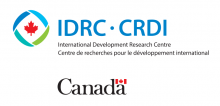
11 Dec 2007
The third Global Knowledge Conference is a vital working platform for people and organizations who want to use Information and Communication Technologies (ICTs) to make a real difference in the world.

03 Jun 2008
Theme: Transformations and Embodiments in Southeast Asian Geographies:
Changing Environments, People and Cultural Groups, Institutions and Landscapes

22 Dec 2007
A total of over 1300 presentations, 122 oral as well as interactive sessions, plenary sessions, technical sessions and numerous lectures attempted to address the theme of “Touching Humanity- Space for Improving Quality of Life”. The theme reflected the growing potential of space to contribute to human welfare across the globe.

27 Nov 2007
KL, Malaysia - *BioMalaysia 2007 Conference* will feature presentations by renowned speakers from various institutions and organisations in biotechnology fields regionally and internationally.

26 Nov 2007
Kuala Lumpur, Malaysia - W2W will be the largest waste and recycling industry trade show in Malaysia. It offers opportunity for any business, research organizations, governmental organizations and NGOs to witness the latest equipment and technology in this industry.

13 Nov 2007
Trieste, Italy. The 18th General Meeting of TWAS - The Academy of Sciences for the Developing World - will take place 13-14 November in Trieste, Italy. More than 180 scientists from 50 countries are expected to attend. Science and technology in Pakistan will be the main topic of discussion.

04 Dec 2007
Bali, Indonesia - The conference brings together representatives of over 180 countries to reach agreement on the various adaptation and mitigation strategies available.

15 Dec 2007
Singapore - The Asian Symposium on Computer Mathematics (ASCM) is a series of conferences which serves as a forum for participants to present original research, learn of research progress and developments, and exchange ideas and views on doing mathematics using computers.

26 Nov 2007
Bangalore, India - The major objective of ACFD is to provide a common forum for exchange of new ideas and experiences amongst the scientists and engineers from Asia as well as other parts of the globe, working on algorithms and applications of CFD.

16 Oct 2007
AIT’s Internet Education and Research Laboratory (intERLab) to host a 3-day workshop on the theme of "Internet Crime: Prevention, Detection and Investigation"

28 Nov 2007
Bangkok, Thailand - This is the first international conference on science education initiated by FASAS, AASA and IAP to provide an excellent opportunity for teachers, researchers and professionals in the fields of science.

16 Dec 2007
Taipei, Taiwan - The ATCM 2007 is an international conference that will continue addressing technology-based issues in all Mathematical Sciences.
Giants in history
Chinese biochemist Chi Che Wang (1894 - 1979), one of the first Chinese women to study abroad, advanced to prominent research positions at American institutions including the University of Chicago and the Northwestern University Medical School.
Ruby Sakae Hirose (1904 – 1960) was a Japanese-American scientist whose research contributed significantly to our understanding of blood clotting, allergies and cancer.
Chinese electron microscopy specialist Li Fanghua (6 January 1932 – 24 January 2020) facilitated the high-resolution imaging of crystal structures by eliminating interference.
Sálim Moizuddin Abdul Ali (12 November 1896 – 20 June 1987), commonly referred to as the Birdman of India, was the first person to conduct systematic surveys of birds from across India.
Haisako Koyama (1916 – 1997) was a Japanese solar observer whose dedication to recording sunspots – cooler parts of the sun’s surface that appear dark – produced a sunspot record of historic importance.
Michiaki Takahashi (17 February 1928 – 16 December 2013) was a Japanese virologist who developed the first chickenpox vaccine.
Toshiko Yuasa (11 December 1909 – 1 February 1980) was the first Japanese female physicist whose research on radioactivity shed light on beta decay – the process in which an atom emits a beta particle (electron) and turns into a different element.
Angelita Castro Kelly (1942-2015) was the first female Mission Operations Manager (MOM) of NASA. She spearheaded and supervised the Earth Observing System missions during its developmental stage.
Malaysia’s first astrophysicist, Mazlan binti Othman (born 11 December 1951) was instrumental in launching the country’s first microsatellite, and in sending Malaysia’s first astronaut, Sheikh Muszaphar Shukor, into space.
Known as Mr. Natural Rubber, chemist and researcher B. C. Shekhar (17 November 1929 – 6 September 2006) introduced a number of technical innovations that helped put Malaysia’s natural rubber industry on the world map.
Shinichiro Tomonaga (31 March 1906 – 8 July 1979), together with Richard Feynman and Julian Schwinger, was awarded the Nobel Prize in Physics in 1965, for their contributions to advance the field of quantum electrodynamics. Tomonaga was also a strong proponent of peace, who actively campaigned against the proliferation of nuclear weapons and promoted the peaceful use of nuclear energy.
South Korean theoretical physicist Daniel Chonghan Hong (3 March 1956 – 6 July 2002) achieved fame in the public sphere through his research into the physics of popcorn.
Japanese chemist Kenichi Fukui (4 October 1918 – 9 January 1998) was the first Asian scientist to be awarded the Nobel Prize in Chemistry. Together with Roald Hoffman, he received this honour in 1981 for his independent research into the mechanisms of chemical reactions.
Chinese palaeontologist, archaeologist and anthropologist Pei Wenzhong (January 19, 1904 – September 18, 1982) is regarded as a founder of Chinese anthropology.
Physicist Narinder Singh Kapany (31 October 1926 – 4 December 2020) pioneered the use of optical fibres to transmit images, and founded several optical technology companies. Born in Punjab, India, he worked at a local optical instruments factory before moving to London for PhD studies at Imperial College. There, he devised a flexible fibrescope to convey images along bundles of glass fibres.
Japanese physicist Ukichiro Nakaya (1900-1962) made the world’s first artificial snowflakes. He started his research on snow crystals in the early 1930s at Hokkaido University, where there is an unlimited supply of natural snow in winter. By taking over 3,000 photographs, he established a classification of natural snow crystals and described their relationship with weather conditions.
The field of solid-state ionics originated in Europe, but Takehiko Takahashi of Nagoya University in Japan was the first to coin the term ‘solid ionics’ in 1967. ‘Solid-state ionics’ first appeared in 1971 in another of his papers, and was likely a play on ‘solid-state electronics’, another rapidly growing field at the time.
Charles Kuen Kao (Nov. 4, 1933 to Sept. 23, 2018) was an engineer who is regarded as the father of fibre optics. His work in the 1960s on long distance signal transmission using very pure glass fibres revolutionized telecommunications, enabling innovations such as the Internet.
Chika Kuroda (24 March 1884 – 8 November 1968) was a Japanese chemist whose research focussed on the structures of natural pigments.
Motoo Kimura (13 November 1924 – 13 November 1994) was a Japanese theoretical population geneticist who is best remembered for developing the neutral theory of molecular evolution.
Meghnad Saha (6 October 1893 – 16 February 1956) was an Indian astrophysicist best known for formulating the Saha ionization equation which describes the chemical and physical properties of stars.
Sir Jagadish Chandra Bose (30 November 1858 – 23 November 1937) was a scientist and inventor who contributed to a wide range of scientific fields such as physics, botany and biology.
Osamu Shimomura (27 August 1928 – 19 October 2018) was a Japanese organic chemist and marine biologist who dedicated his career to understanding how organisms emitted light.
Subrahmanyan Chandrasekhar (19 October 1910 – 21 August 1995) was an Indian astrophysicist who studied the structure and evolution of stars.
Joo-myung Seok (November 13, 1908 – October 6, 1950) was a Korean butterfly entomologist who made important contributions to the taxonomy of the native butterfly species in Korea.
Mathematician Maryam Mirzakhani (12 May 1977 – 14 July 2017) was the first and only woman and Iranian to date to win the Fields Medal in 2014 for her work on curved surfaces.
Sir Chandrasekhara Venkata Raman (7 November 1888 – 21 November 1970) was an Indian physicist who performed ground-breaking research in the field of light-scattering.
Mohammad Abdus Salam (29 January 1926 – 21 November 1996) was a theoretical physicist and the first Pakistani to receive a Nobel Prize in science.
Srinivasa Ramanujan (22 December 1887 – 26 April 1920) was a math prodigy and widely considered one of India’s greatest mathematicians. Despite having almost no formal training in mathematics, he made substantial contributions to mathematical analysis, number theory, infinite series and continued fractions.
Gopalasamudram Narayanan Ramachandran (8 October 1922 – 7 April 2001) is best known for developing the Ramachandran plot to understand the structure of short chains of amino acids, known as peptides.
Hitoshi Kihara (1893 – 1986) was one of the most famous Japanese geneticists of the 20th century. One of his most significant contributions was identifying sex chromosomes (X and Y) in flowering plants.
Chien-Shiung Wu (31 May 1912 – 16 February 1997) was an experimental physicist who made several important contributions to nuclear physics. Wu worked on the Manhattan Project – a top-secret program for the production of nuclear weapons during World War II and helped to develop a process for separating uranium into U235 and U238.
Meemann Chang (born 17 April 1936) is a Chinese palaeontologist who studied the fossils of ancient fish to understand the evolution of life. By examining fossils, she uncovered new insights on how vertebrates, animals with a backbone, migrated from the sea and became adapted to live on land.
Bibha Chowdhuri (1913 – 2 June 1991) was an Indian physicist who researched on particle physics and cosmic rays. In 1936, she was the only female to complete a M.Sc. degree at the University of Calcutta.
Lin Lanying (7 February 1918 – 4 March 2003) was a Chinese material engineer remembered for her contributions to the field of semiconductor and aerospace materials. Lanying was born into a family who did not believe in educating girls and she was not allowed to go to school.
Japanese geochemist Katsuko Saruhashi developed the first method and tools for measuring carbon dioxide in seawater


